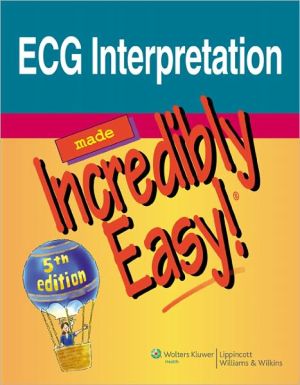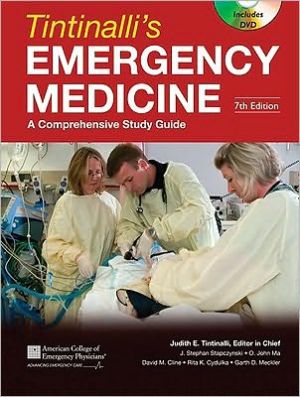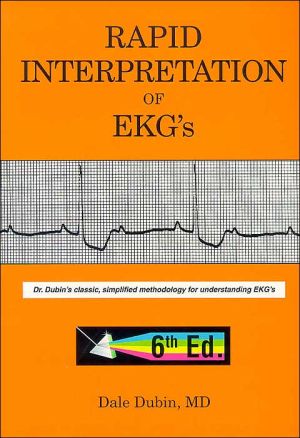ECG Interpretation Made Incredibly Easy!
Updated and improved for its Fourth Edition, this practical reference makes learning to interpret rhythm strips easy and fun. It uses a light-hearted writing style, abundant illustrations, and hallmark Incredibly Easy! features to help readers remember key points.\ Chapters review cardiac anatomy and physiology, explain how to obtain and interpret rhythm strips and 12-, 15-, and 18-lead ECGs, and teach readers how to recognize and manage arrhythmias. This edition's explanation of the 8-step...
Search in google:
ECG Interpretation Made Incredibly Easy! Fifth Edition uses a unique, conversational writing style that breaks down complex concepts and information to make ECG interpretation easier to understand. Fully updated and now in full color, the book reviews fundamental cardiac anatomy and physiology, explains how to obtain and interpret a rhythm strip, and teaches the reader how to recognize and treat sinus, atrial, and ventricular arrhythmias as well as heart blocks. In addition, the book explains how to obtain and interpret 12-lead ECGs. Special elements found throughout the reference make it easy to remember key points. Each chapter features: A summary of key points; clear, simple explanations of problems; definitions of key terms; illustrations that clearly explain key concepts; bullets, ballot boxes, and checklists that make it easy to spot important points at a glance; sidebars that highlight key facts about ECG interpretation; and quick quizzes to test knowledge.
Contributors and consultants Not another boring foreword Part I: ECG fundamentals 1: Cardiac anatomy and physiology 2: Obtaining a rhythm strip 3: Interpreting a rhythm strip Part II: Recognizing arrhythmias 4: Sinus node arrhythmias 5: Atrial arrhythmias 6: Junctional arrhythmias 7: Ventricular arrhythmias 8: Atrioventricular arrhythmias Part III: Treating arrhythmias 9: Nonpharmacologic treatments 10: Pharmacologic treatments Part IV: The 12-lead ECG 11: Obtaining a 12-lead ECG 12: Interpreting a 12-lead ECG Appendices and index Practice makes perfect ACLS algorithms Brushing up on interpretation skills Look-alike ECG challenge Quick guide to arrhythmias Glossary Selected references Index
\ Reviewer: Elaine C Hannigan, RN, MSN(Purdue University School of Nursing)\ Description: This excellent addition to the Made Incredibly Easy series makes a difficult subject easy to understand using a straightforward, clear style with example rhythm strips that are colorful and easy to read.\ Purpose: The purpose of the book is "to help the learner understand basic ECG interpretation." The book uses excellent pictures and text to explain key concepts and important patient care reminders. \ Audience: This would be appropriate for beginning practitioners as well as more experienced nurses looking for an ECG interpretation review. I have recommended the previous edition of this book to staff nurses studying for ACLS certification. The contributors and consultants include staff nurses, clinical nurse specialists, advanced practice nurses, and clinical educators experienced in the care of patients with cardiovascular disease.\ Features: The book begins with a review of cardiac anatomy and the basic components of the rhythm strip. Easy to understand illustrations and practice rhythm strips are used to explain atrial and ventricular dysrhythmias, pacemakers, and internal cardiac defibrillators. The chapter on pharmacologic therapy is very helpful in understanding the effects of antiarrhythmics on the cardiovascular system and other systems of the body. The book concludes with discussion of 12-lead ECG interpretation. Illustrations throughout are colorful and useful in explaining concepts.\ Assessment: I have used previous editions of this book for several years and have recommended it to others, but I like this edition even more. The illustrations are even easier to read and practice rhythm strips throughout the chapters are very helpful. The chapter on pharmacologic therapy does a very good job of explaining the major antiarrhythmic drug classifications. The chapter on 12-lead ECG interpretation is an improvement and is easy to read and understand. After you spend time with this book, you will wonder why you ever thought reading rhythm strips was difficult, and the price is very reasonable. I highly recommend it.\ \








